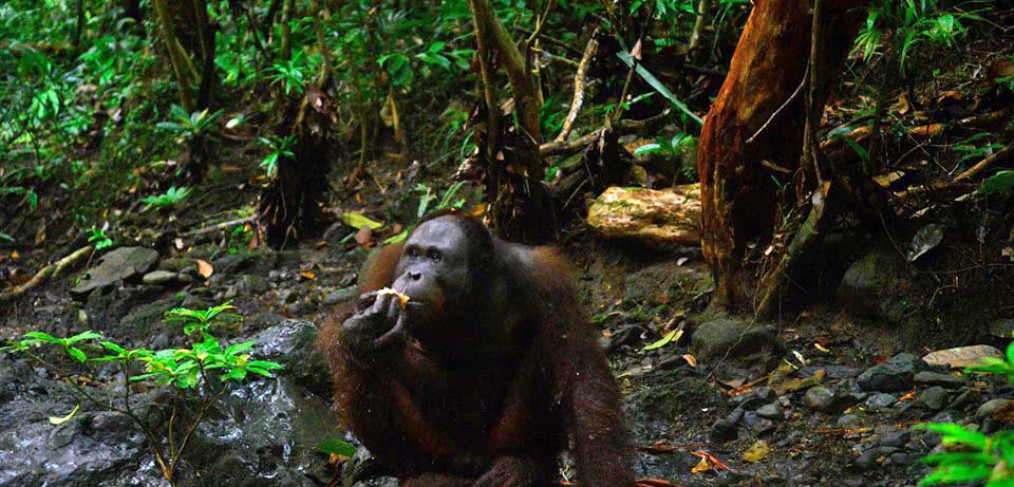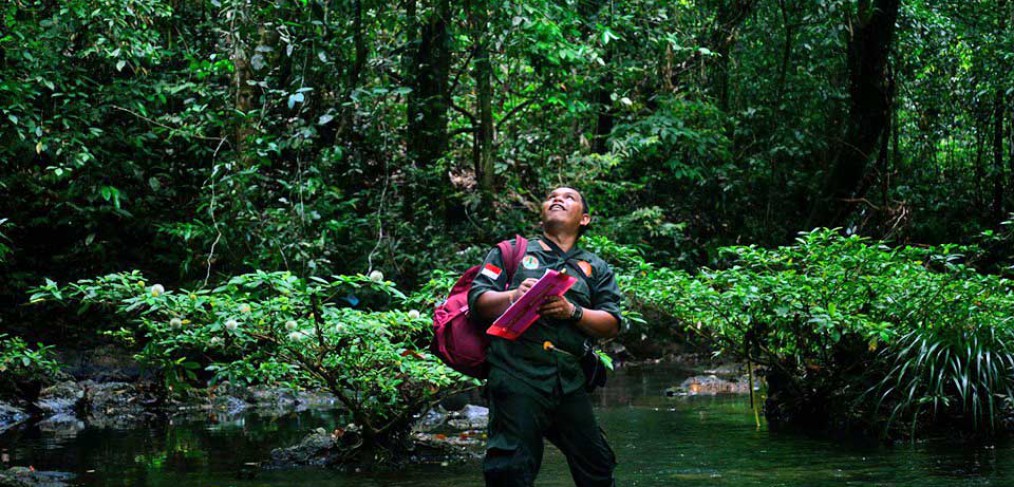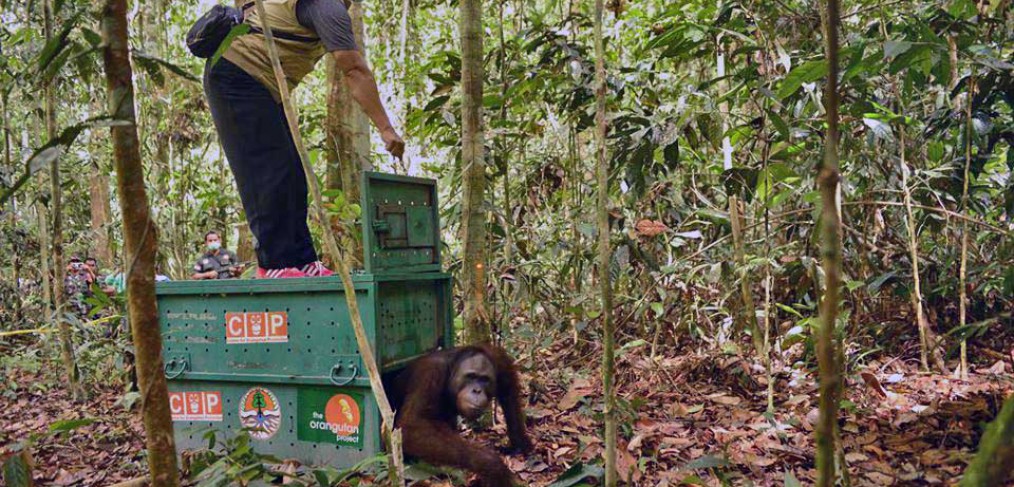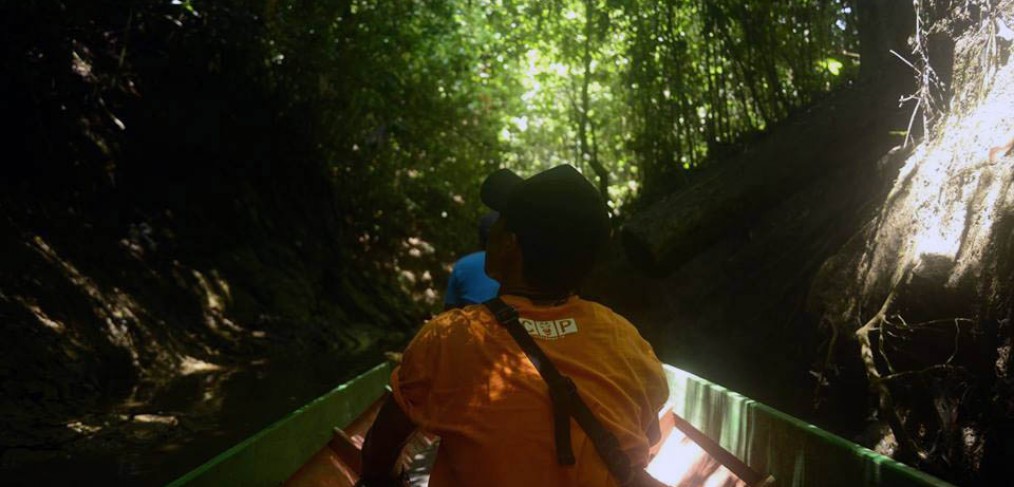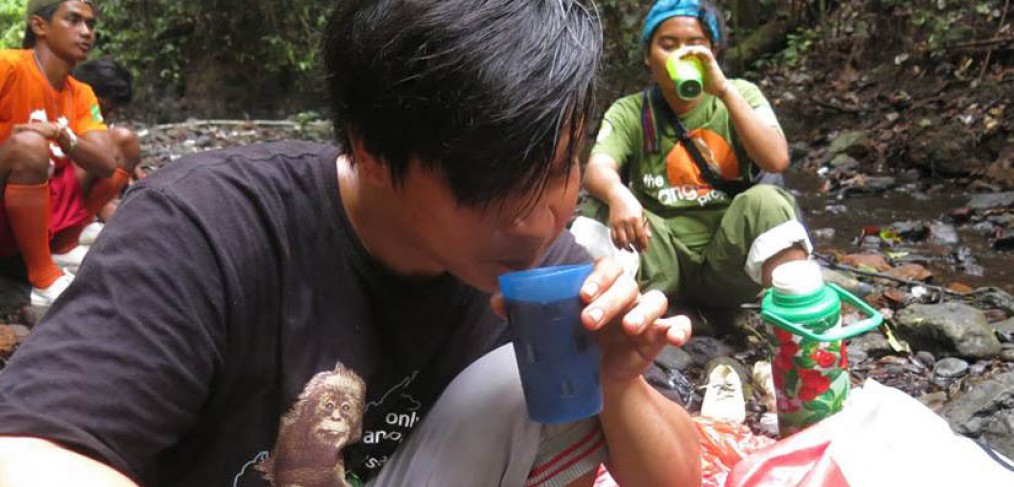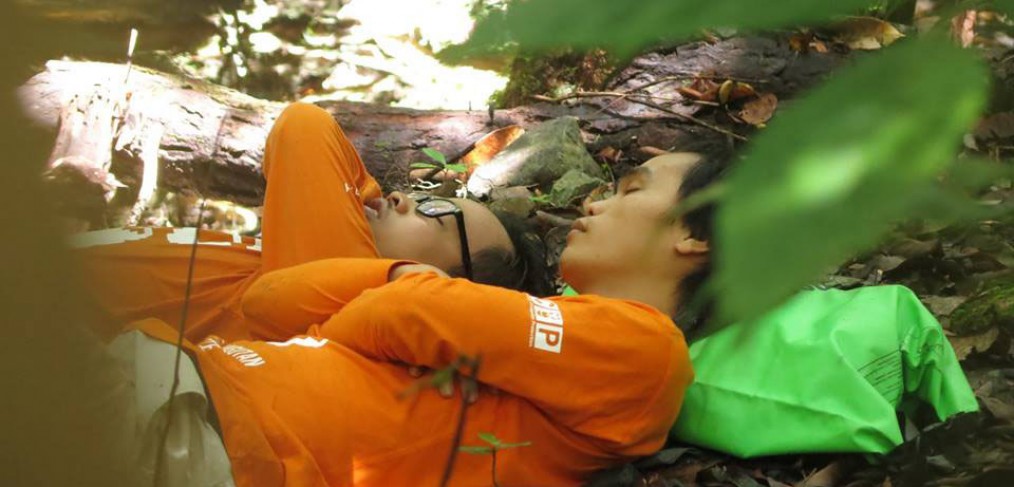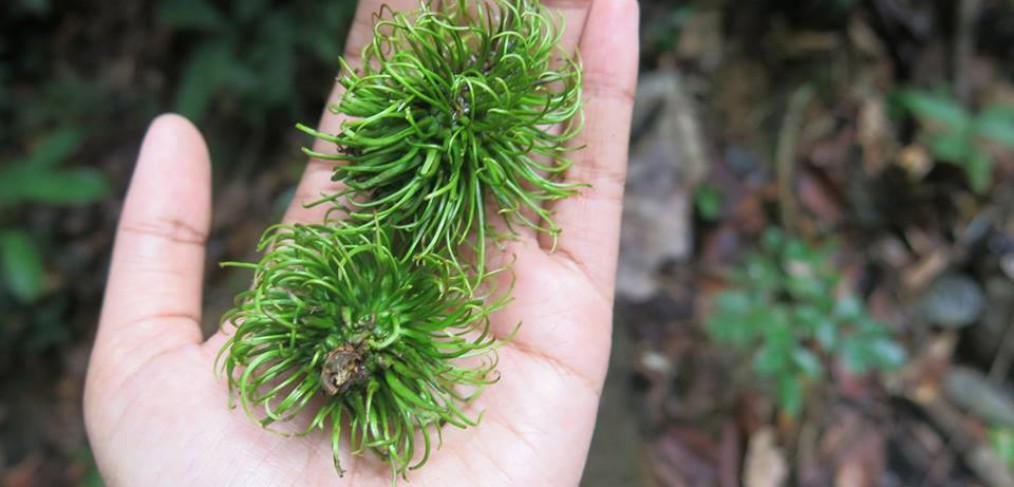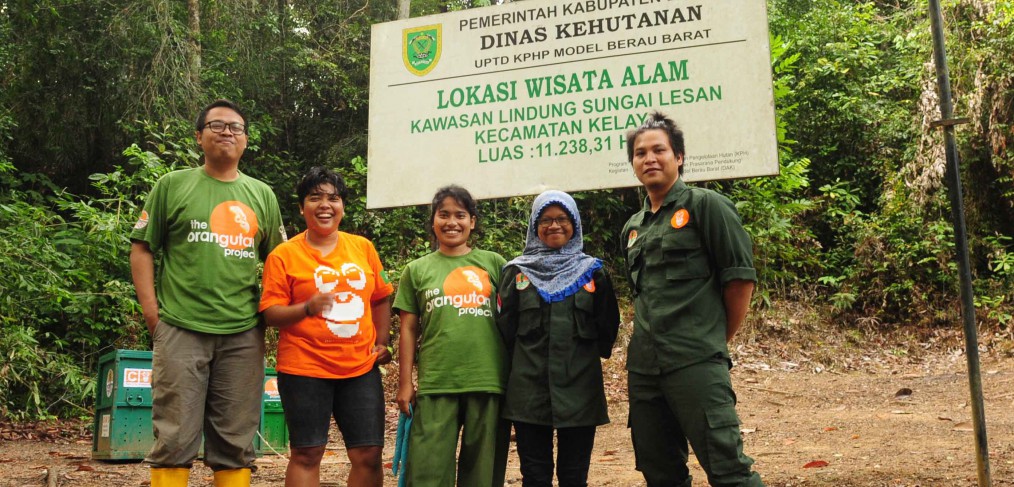The annual school organized by the Center for Orangutan Protection spawns new seedlings of conservationists. They are Reza Dwi Kurniawan, COP School Batch 5, Lafizatun Azizah COP School Batch 6, drh. Flora and Pasianus Idam, COP School Batch 7, Widi Nursanti, COP School Batch 8. They all work together and live away from cellular signal and bustle of the city. The Lesan River Protected Forest (HLSL) is now their temporary place of residence to assist the monitoring process of released orangutan carried out by the East Kalimantan BKSDA assisted by the COP.
It is a very proud thing when COP alumni gathered and worked together to help save orangutans and remaining forests in East Kalimantan. “The regeneration works when new young individuals grow and develop in the activities of saving Indonesia’s biodiversity.”, said Daniek Hendarto, the head of the previous COP School.
Their activities are quite busy at HLSL, with the rangers they work from morning to dusk exploring the forest, watching the orangutans. At night, their work is not over yet. Ipeh, Lafizatun Azizah’s nickname, and Widi ensure that the recap data on monitoring and documentation is well documented and fully recorded in their records. Paianus Idam made sure map data from GPS was recorded perfectly. While Vet Flora evaluated the possibility of medical action if needed for orangutans. No matter how tiring the day is, reporting still needs to be done. Accompanied by hot coffee and tea they chatter about how their days went. From leeches sucking their blood to falling into wild boar mud puddles are among the entertaining topics before they lie down, and sleep.
“I am a person who always believe that when you plant good things, they will reap good seeds too. Like at the School COP, we plant a strong sense of mutual cooperation as a family and work with the heart. Because everything that starts from heart results in happiness and will produce good things including in this monitoring activity,” said Daniek Hendarto. Someday, COP will see them grow from a small school in the city of Yogyakarta, it’s called COP School. (EBO)
COP SCHOOL ALUMNI BECOME ORANGUTAN MONITORING TEAM MEMBER
The annual school organized by the Center for Orangutan Protection spawns new seedlings of conservationists. They are Reza Dwi Kurniawan, COP School Batch 5, Lafizatun Azizah COP School Batch 6, drh. Flora and Pasianus Idam, COP School Batch 7, Widi Nursanti, COP School Batch 8. They all work together and live away from cellular signal and bustle of the city. The Lesan River Protected Forest (HLSL) is now their temporary place of residence to assist the monitoring process of released orangutan carried out by the East Kalimantan BKSDA assisted by the COP.
It is a very proud thing when COP alumni gathered and worked together to help save orangutans and remaining forests in East Kalimantan. “The regeneration works when new young individuals grow and develop in the activities of saving Indonesia’s biodiversity.”, said Daniek Hendarto, the head of the previous COP School.
Their activities are quite busy at HLSL, with the rangers they work from morning to dusk exploring the forest, watching the orangutans. At night, their work is not over yet. Ipeh, Lafizatun Azizah’s nickname, and Widi ensure that the recap data on monitoring and documentation is well documented and fully recorded in their records. Paianus Idam made sure map data from GPS was recorded perfectly. While Vet Flora evaluated the possibility of medical action if needed for orangutans. No matter how tiring the day is, reporting still needs to be done. Accompanied by hot coffee and tea they chatter about how their days went. From leeches sucking their blood to falling into wild boar mud puddles are among the entertaining topics before they lie down, and sleep.
“I am a person who always believe that when you plant good things, they will reap good seeds too. Like at the School COP, we plant a strong sense of mutual cooperation as a family and work with the heart. Because everything that starts from heart results in happiness and will produce good things including in this monitoring activity,” said Daniek Hendarto. Someday, COP will see them grow from a small school in the city of Yogyakarta, it’s called COP School. (EBO)
ALUMNI COP SCHOOL MENJADI TIM MONITORING ORANGUTAN
Sekolah tahunan yang diselenggarakan oleh Centre for Orangutan Protection menelurkan bibit penggiat konservasi baru. Ada Reza Dwi Kurniawan alumni COP School Batch 5, Lafizatun Azizah alumni COP School Batch 6, drh. Felisitas Flora dan Pasianus Idam yang merupakan alumni COP School Batch 7 serta Widi Nursanti alumni COP School Batch 8. Mereka berempat bahu membahu dan tinggal jauh dari sinyal dan hiruk pikuk kota. Hutan Lindung Sungai Lesan (HLSL) saat ini menjadi tempat tinggal mereka sementara waktu untuk membantu proses monitoring pelepasliaran orangutan yang dilakukan oleh BKSDA Kalimantan Timur dibantu oleh COP.
Ini adalah hal yang sangat membanggakan ketika para alumni sekolahan COP berkumpul dan bekerja bersama untuk membantu menyelamatkan orangutan dan hutan tersisa di Kalimantan Timur. Ini sebuah regenerasi yang berhasil ketika individu muda baru tumbuh dan berkembang dalam aktivitas penyelamatan keanekaragaman hayati Indonesia.”, ujar Daniek Hendarto, kepala sekolah COP School terdahulu.
Kegiatan mereka di HLSL cukup padat, bersama para ranger mereka bekerja dari pagi hingga malam menjelang untuk menjelajahi hutan, mengawasi orangutan. Di malam hari, pekerjaan mereka belum usai, Ipeh panggilan akrab Lafizatun Azizah bersama Widi memastikan data rekap monitoring dan dokumentasi terarsip baik dan terekap dengan lengkap dalam catatan mereka. Paianus Idam memastikan data peta dari GPS tercatat dengan sempurna. Sementara drh. Flora mengevaluasi kemungkinan tindakan medis jika diperlukan orangutan. Secapek apapun mereka, pelaporan tetap dilakukan. Ditemani kopi dan teh panas dengan obrolan bagaimana pacet menghisap darah hingga jatuh terperosok di kubangan lumpur babi hutan menjadi bumbu segar sebelum mereka merebahkan diri, tidur. (NIK)

